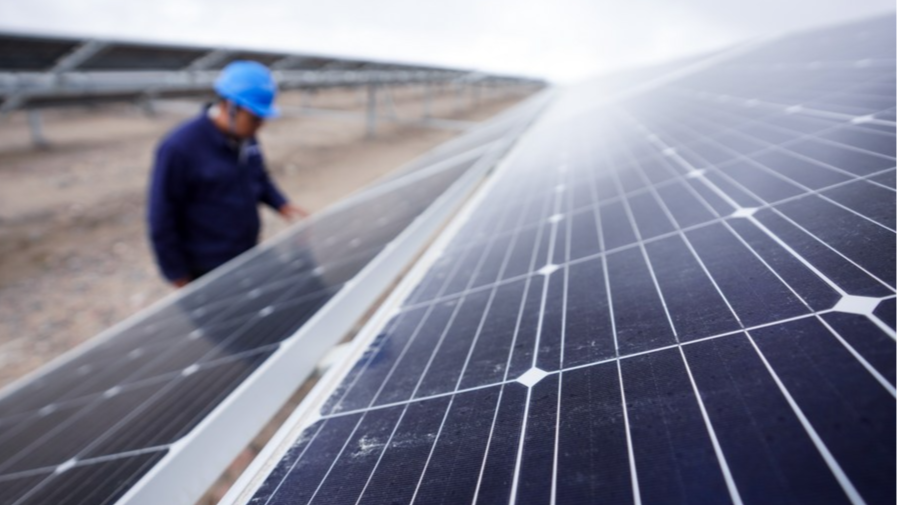
China has further solidified its position as the world's largest producer and consumer of energy, continuously shaping the global energy landscape throughout last year, according to a think tank.
The country's energy consumption in 2024 grew by 4 percent compared to the previous year, driving global demand for primary energy up by 1.9 percent, according to a report released by China National Petroleum Corp Economics and Technology Research Institute in Beijing on Tuesday.
China's rise to the top of the global energy ladder comes as it maintains its commitment to a green and low-carbon energy transition.
READ MORE: Renewables end 2024 on high note
The country's non-fossil energy investments, including solar, wind and hydrogen power now account for one-third of global non-fossil energy investment, positioning the nation as a leader in this transformation, it said.
As part of this shift, the country's electrification of end-use energy has been making significant strides, with the electrification rate of enduse energy rising to 29 percent in 2024 and expected to reach 30 percent by 2025.
"China's energy consumption has been optimized throughout last year as the country sought to ramp up renewable energy use and upgrade its power system," said Lu Ruquan, head of the China National Petroleum Corp Economics and Technology Research Institute.
"China has both the capability and the ambition to become a central force in driving the global energy transition, as it is committed to advancing the transformation of its energy mix from a reliance on coal to a more balanced structure, with coal, oil and natural gas, as well as non-fossil fuels sharing equal footing."
Lu believes renewable energy output will increase at a faster pace in 2025, driving China's total energy production to approximately 5.26 billion metric tons of standard coal equivalent.
This will boost the country's energy self-sufficiency rate to 84.7 percent, a 0.1 percentage point increase from 2024.
"Non-fossil energy consumption is projected to rise by around 10 percent year-on-year, further accelerating the share of clean energy in China's energy mix," he said.
On the other hand, China's oil consumption is also approaching its peak.
The report predicts a 1.9 percent drop in demand for refined oil in 2025, with annual consumption forecast to reach 382 million tons. This decline marks a crucial turning point for China's oil and petrochemical sectors, driven in part by a sharp rise in electric vehicle adoption and the growing use of LNG-powered heavy trucks, according to the institute.
The shift in demand dynamics signifies a transformative phase for the country's oil industry, where refined oil consumption is decreasing while petrochemical demand is on the rise, it said.
ALSO READ: Photovoltaic installed capacity forecast to grow 10% this year
The penetration rate of new energy vehicle passenger cars surpassed 50 percent by July, overtaking gasoline vehicles to become the market's dominant segment, said Wang Lining, director of the oil market department under the economics and technology research institute of China National Petroleum Corp.
Going forward, the report forecasts that the global energy market will continue to evolve, with the demand for fossil fuels gradually declining in favor of green energy alternatives.
China's energy strategy will play a critical role in shaping these trends, with the country's policies focused on ensuring energy security while accelerating the transition to a low-carbon future.


